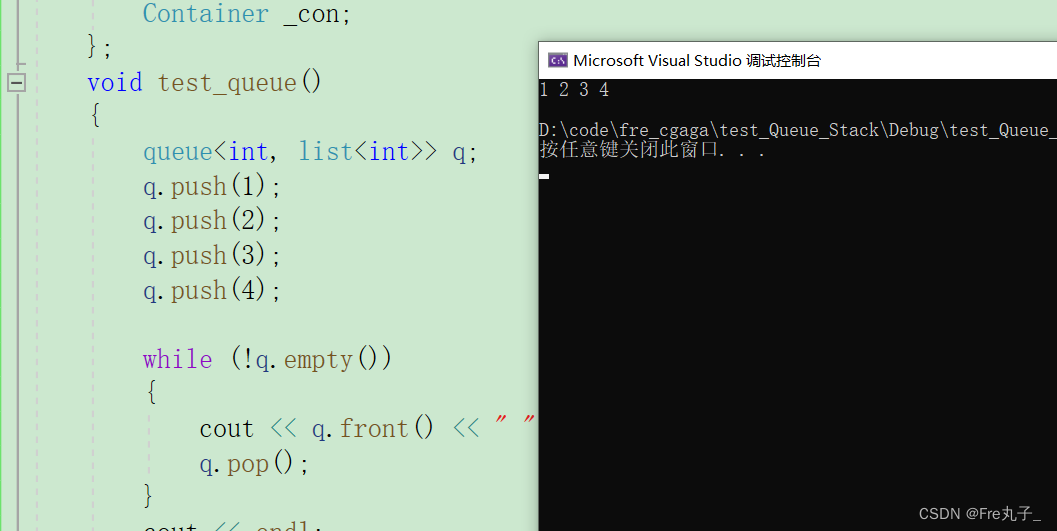模拟栈实现
1 栈是一种容器适配器,专门设计用于后进先出的后进先出环境,在这种环境中,元素只从容器的一端插入和提取。
2 栈是作为容器适配器实现的,这些适配器是使用特定容器类的封装对象作为其底层容器的类,提供一组特定的成员函数来访问其元素。元素从特定容器的“后面”(即堆栈的顶部)被推入/弹出。
3 底层容器可以是任何标准容器类模板或其他特定设计的容器类。集装箱应支持以下操作:
- empty
- size
- back
- push_back
- pop_back
//头文件
#include <list>
#include <vector>
#include <deque>
namespace test
{
template<class T,class Container = deque<T>>
class stack
{
public:
void push(const T& x)
{
_con.push_back(x);
}
void pop()
{
_con.pop_back();
}
T& top()
{
return _con.back();
}
size_t size()
{
return _con.size();
}
bool empty()
{
return _con.empty();
}
private:
Container _con;
};
void test_stack()
{
stack<int> st1;
st1.push(1);
st1.push(2);
st1.push(3);
st1.push(4);
while (!st1.empty())
{
cout << st1.top() << " ";
st1.pop();
}
cout << endl;
}
}

模拟队实现
1 先进先出队列队列是一种容器适配器,专门设计用于在FIFO上下文中操作(先进先出),其中将元素插入容器的一端并从另一端提取。
2 队列是作为容器适配器实现的,容器适配器是使用特定容器类的封装对象作为其底层容器的类,提供一组特定的成员函数来访问其元素。元素被推入特定容器的“后面”,并从其“前面”弹出。
3 底层容器可以是标准容器类模板之一,也可以是其他专门设计的容器类模板容器类。该底层容器应至少支持以下操作:
- empty
- size
- front
- back
- push_back
- pop_front
//头文件
#include <vector>
#include <list>
#include <deque>
namespace test
{
template<class T, class Container = deque<T>>
class queue
{
public:
void push(const T& x)
{
_con.push_back(x);
}
void pop()
{
_con.pop_front();
//_con.erase(_con.begin);
}
T& front()
{
return _con.front();
}
T& back()
{
return _con.back();
}
size_t size()
{
return _con.size();
}
bool empty()
{
return _con.empty();
}
private:
Container _con;
};
void test_queue()
{
queue<int, list<int>> q;
q.push(1);
q.push(2);
q.push(3);
q.push(4);
while (!q.empty())
{
cout << q.front() << " ";
q.pop();
}
cout << endl;
}
}























 170
170











 被折叠的 条评论
为什么被折叠?
被折叠的 条评论
为什么被折叠?








